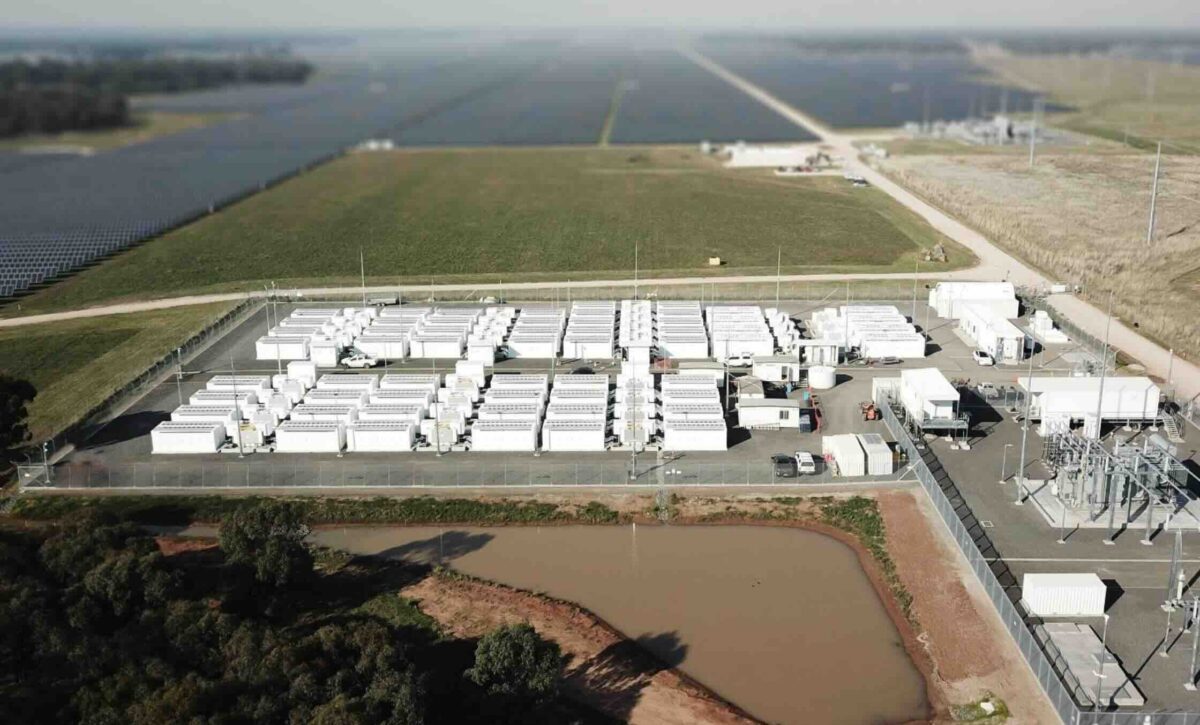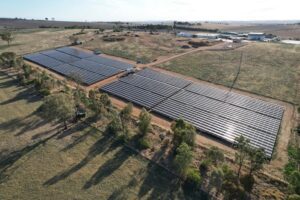Transmission company Transgrid has signed a long term contract with the owners of the Riverina and Darlington Point big batteries in NSW to help boost the capacity on a heavily constrained part of the NSW grid.
The contract is likely to be the first of many as the transmission company looks to “non-network solutions” to boost the carrying capacity of the NSW grid, particularly as new wind and solar projects are added to the regions to help replace the state’s ageing coal generators.
The contract with the Riverina and Darlington Point Battery Energy Storage Systems (BESS) – three separe battery connections that together account of 150 MW and 300 MWh of storage – will allow up to 120MW of additional capacity on a constrained section of the Transgrid network between Darlington Point and Wagga Wagga.
The decision to issue a long term contract with the battery means not having to build a new transmission line on a part of a grid that was constrained to 300 MW.
“Transgrid is going beyond the traditional poles and wires approach and seeking innovative, faster and lower-cost alternatives to increase system stability and reliability and keep energy prices as low as possible for consumers,” says Transgrid’s head of networks Maria Jordan.
“South West NSW has seen significant growth in renewable generation connections to the transmission network and this trend, which is forecast to continue, is having an impact on how this part of the power system operates.”
Jordan says the contracts will allow more renewable energy to be delivered to local households and businesses without the need to build a new transmission line between Wagga Wagga and Darlington Point.
“This is Transgrid’s first contracted non-network solution to come into service with more to follow in other parts of NSW,” she says.
“These non-network solutions and technologies allow consumers to benefit from existing transmission infrastructure, avoiding the cost of building new towers and lines.”
The owners of the two big batteries are Edify Energy and Federation Asset Management. The batteries already have long term contracts with Shell Energy and EnergyAustralia but the new contract will not interfere with those deals.
“It’s essentially providing an initial response to a voltage disturbance,” says Edify Energy head of technology Sam Hill, who adds that it is similar to a contract Edify has signed for the new Koorangie battery in Victoria. He says that enables the local network to operate at higher capacity. He described the service as similar to a “system strength” offering.
Edify Energy CEO John Cole said in a statement that large-scale batteries are revolutionising the energy landscape by time-shifting power to provide grid stability and ensure clean energy is delivered at the lowest possible cost.
“As the nation’s ageing coal plants retire, the need for energy storage becomes ever more pressing,” said FAM’s co-founder Stephen Panizza.
“Advanced grid-forming batteries like the Riverina BESS are critical to extracting the maximum capacity from our existing grid infrastructure, allowing timely integration of additional wind and solar generation into the National Electricity Market while our grid infrastructure is upgraded.”








